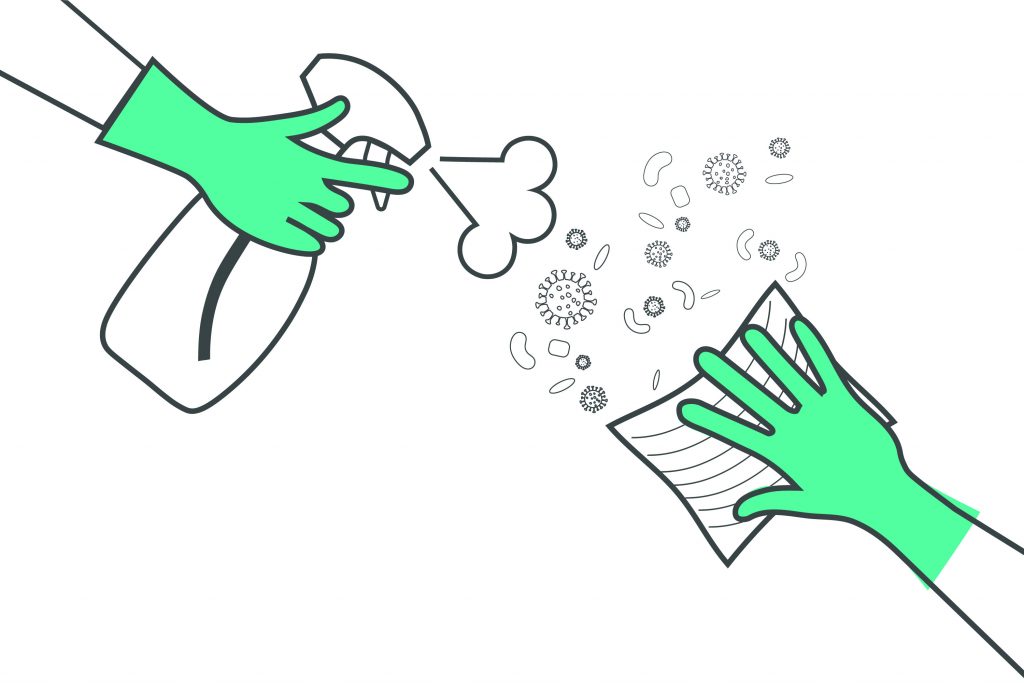Best practices for cleaning HoWs amid COVID-19.
The novel coronavirus (COVID-19) has altered the way we live. One mantra we constantly hear is “Keep safe.” Although there is a multitude of opinions surrounding that mantra, most people are following government guidelines, which entail wearing a mask, frequently washing hands, and maintaining social distance to protect others and ourselves. We follow these guidelines while, at the same time, hoping and praying these actions will slow—perhaps even stop—transmission of the virus that causes COVID-19.
Airlines, schools, restaurants, grocery stores, big-box stores and even familyowned businesses affirm that they’re actively disinfecting their spaces in order to keep people safe. Similarly, most houses of worship (HoWs) that have already reopened are cleaning and disinfecting their lobbies, restrooms,
classrooms and worship spaces in order to comply with state and local guidelines and keep people safe.
I believe that most people are aware of the need to clean their homes and businesses in order to keep their family members, friends, clients and customers safe. However, I don’t believe very many people are aware of the measures that many HoWs, in particular, are taking in the time of COVID-19. Worship leaders are seeking to create safe spaces for congregants to gather. I believe we can all benefit from understanding the efforts many HoWs are making to create safe spaces. With that awareness, we might be able to provide information that can help other HoWs reopen soon.
Recently, I visited a HoW that has undertaken significant measures to create clean and disinfected spaces for its congregants. The purpose of my visit was to help the HoW to develop a new design for the production space that houses its audio and video control rooms. When I entered the HoW’s lobby, I immediately noticed that the facilities looked exceptionally clean and smelled fresh.
We entered the audio and video control rooms, and they were very clean and smelled fresh, as well. I went to this HoW with no intention of talking about cleaning practices, but the obvious cleanliness piqued my interest and led me to ask the team about the efforts its members were making to clean the HoW, the production space and the production equipment.
The team explained to me that the entire campus, including the production rooms, is cleaned and disinfected after each and every worship service. They explained that a medical-grade cleaning company consulted with the HoW and informed the team of the difference between “cleaning” and “disinfecting.” I learned that cleaning surfaces with soapy substances kills many germs and minimizes the transmission risk of COVID-19 (as well as most any virus); however, when you disinfect surfaces, it kills nearly all germs and viruses—eliminates them. Thus, the maintenance team cleans the entire campus and then uses sanitizer machines to disinfect the campus.
Then, I asked the team whether and how its members disinfect their equipment. I learned that, each time the equipment has been utilized, they use alcohol wipes to clean it. Among the equipment sanitized is the front-of-house (FOH) audio board, computers, the video production switcher, audio equipment for broadcast, video cameras, remote controls and furniture surfaces. They had tried bleach wipes, but they were wise enough to test them first. They quickly realized that bleach is too harsh, actually leaving marks on the gear. They learned that alcohol wipes, by contrast, are effective disinfecting tools that don’t damage the equipment. Thus, now, the team carefully uses disposable alcohol wipes to wipe down all the gear and furniture.
Later, I asked the worship leader about the measures the HoW takes to clean the stage and the onstage gear. The team adheres to an impressive protocol to mitigate COVID-19’s spread. In fact, the production team spends many hours each week wiping down the drums, the keyboards, the guitars and the microphone stands. The leader wowed me when he explained the specific measures the HoW takes to disinfect its microphones.
He explained that each singer on the worship team has been assigned a microphone that only he or she can use. The team has covered each microphone head with a foam windscreen. After each service, the team member places the microphone in a plastic bin that is then sealed. During the week, a member of the production team, who wears a mask and gloves, wipes down each microphone with alcohol wipes. The team member also places the foam windscreens and microphone heads into a vat of nearly pure alcohol, where they soak for one hour. Then, they’re removed and allowed to air dry. Using a new set of gloves, the team member reassembles the microphones and places them into a new zipper storage bag. When the singers return, each of them takes the microphone he or she was assigned and sings into it. The protocol repeats after each use.
I was impressed by the detailed measures this particular HoW follows to clean and disinfect its spaces and its equipment in order to keep people safe. Many HoWs, after having been closed for months, will soon begin to open their facilities again so that congregants can gather for worship. I believe that we can use this example, and other examples and information that you might have, to help HoWs create clean and disinfected and, thus, safe spaces for people to gather for worship. That is what I believe. Please tell me what you believe.
To read more from Sound & Communications, click here.
